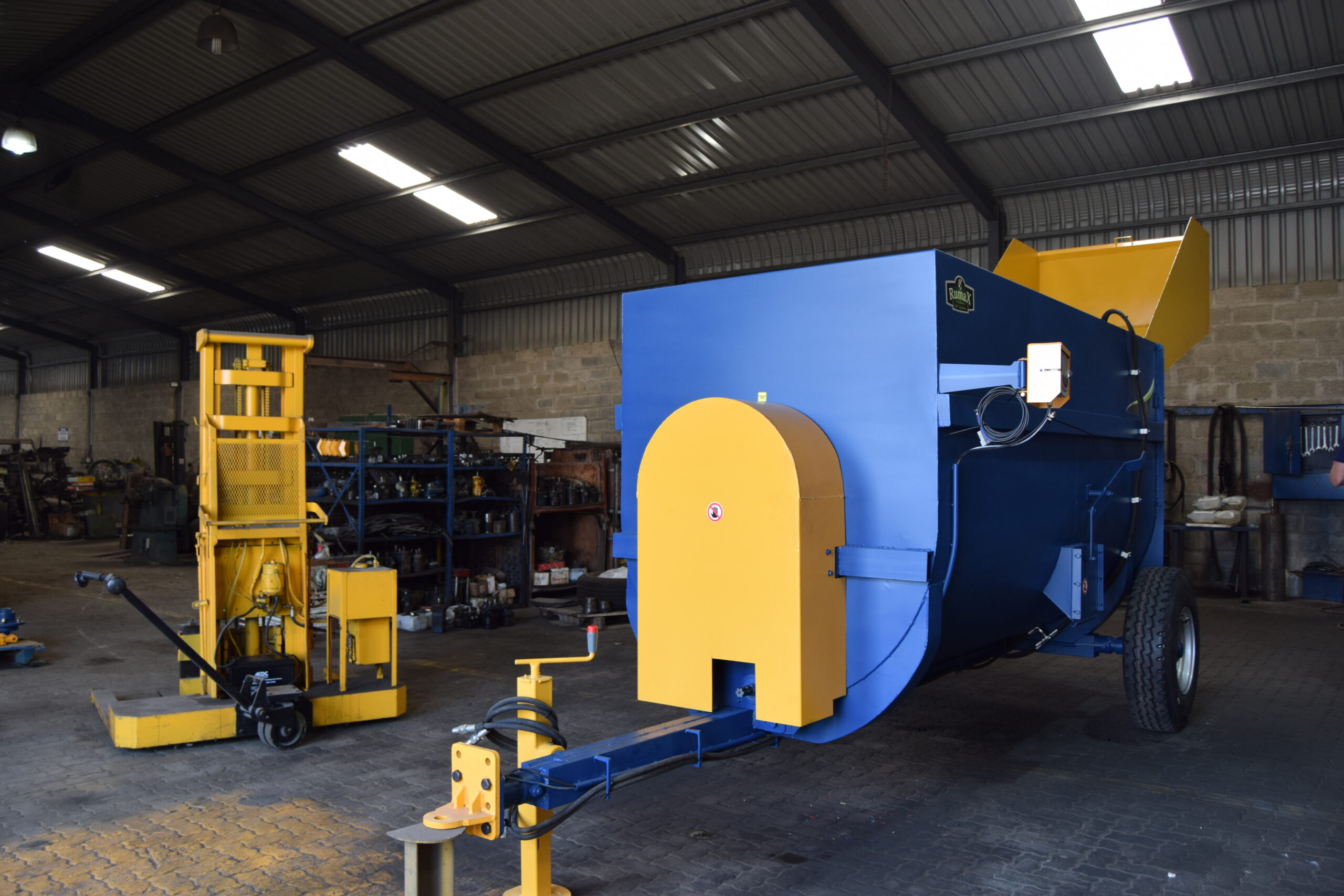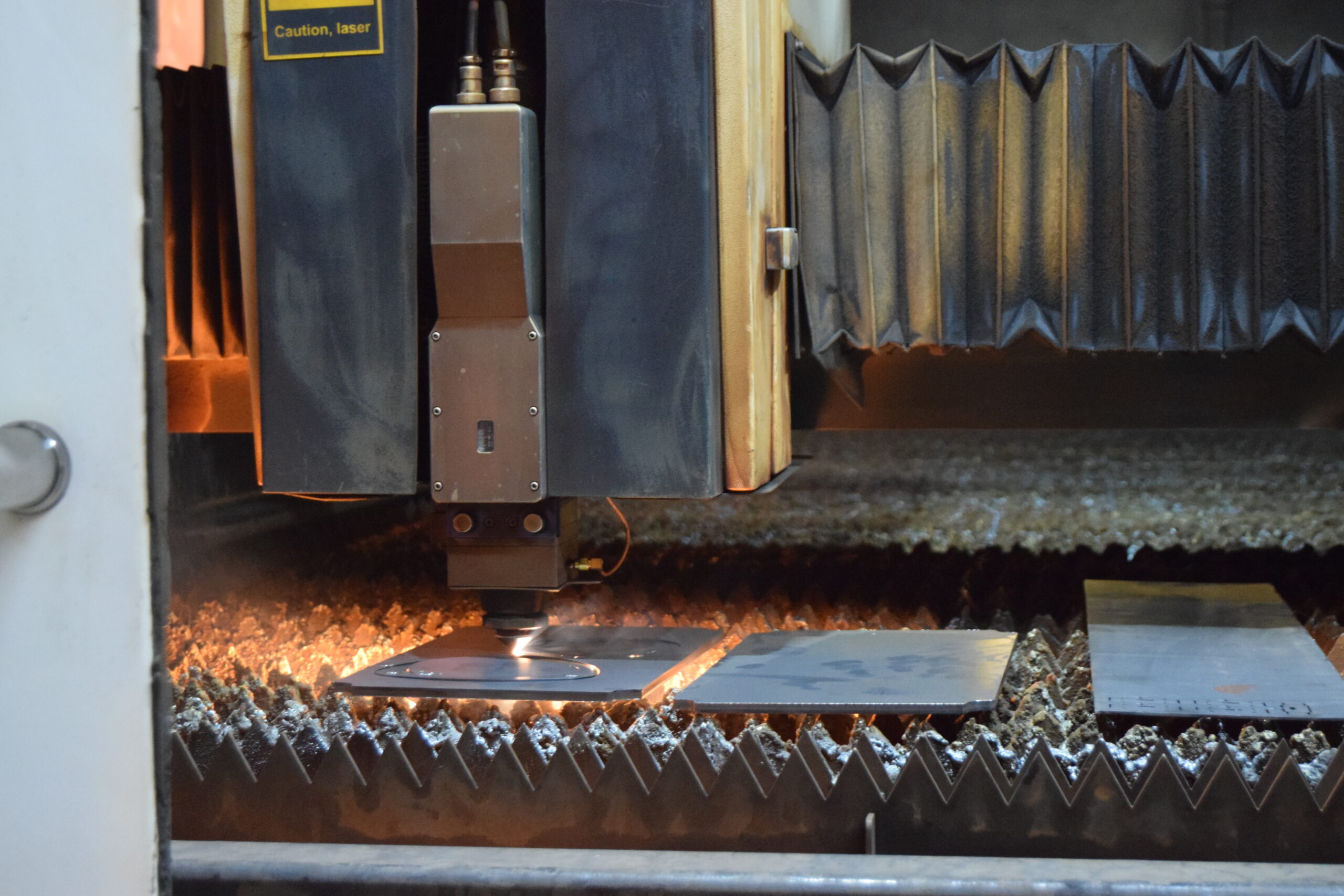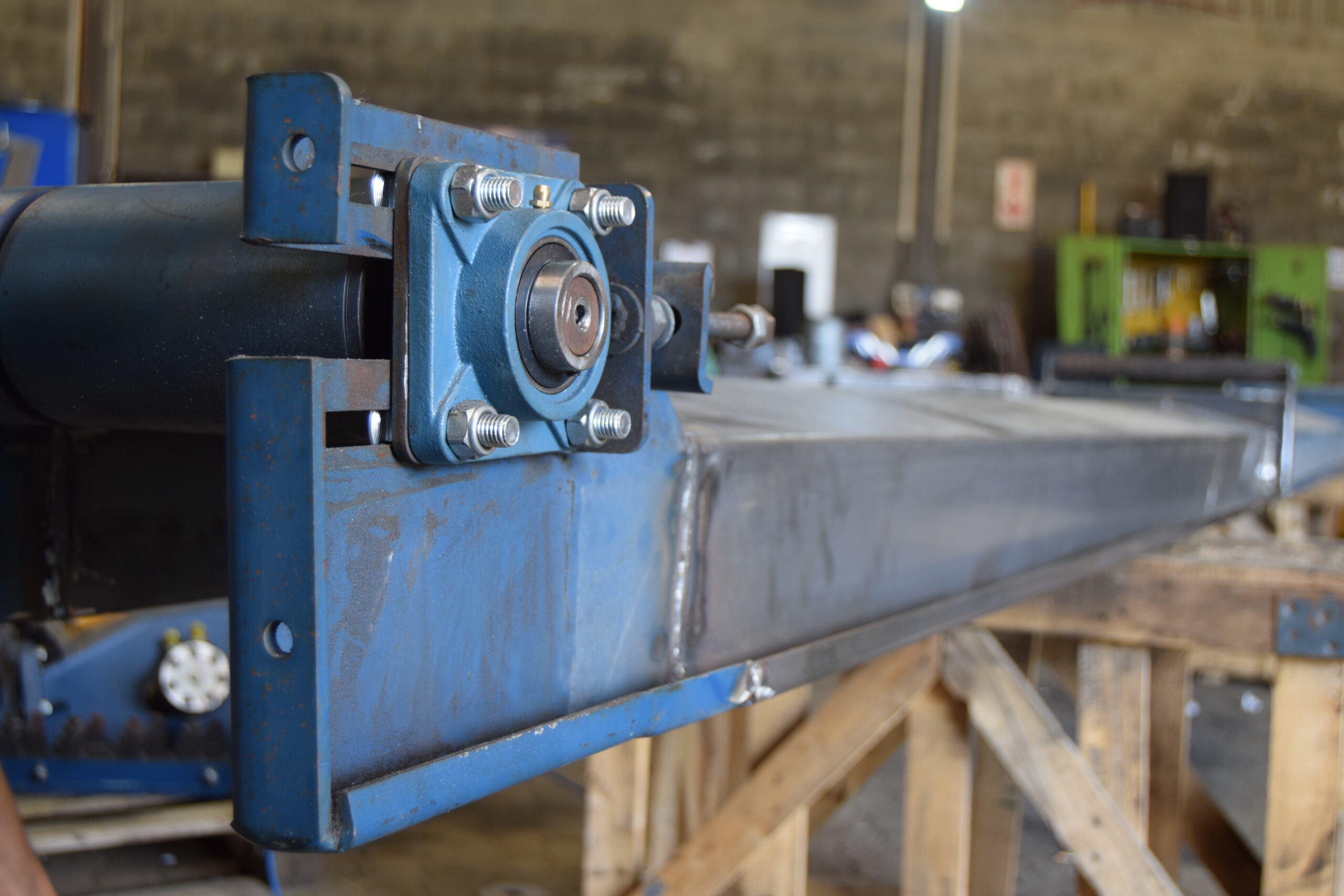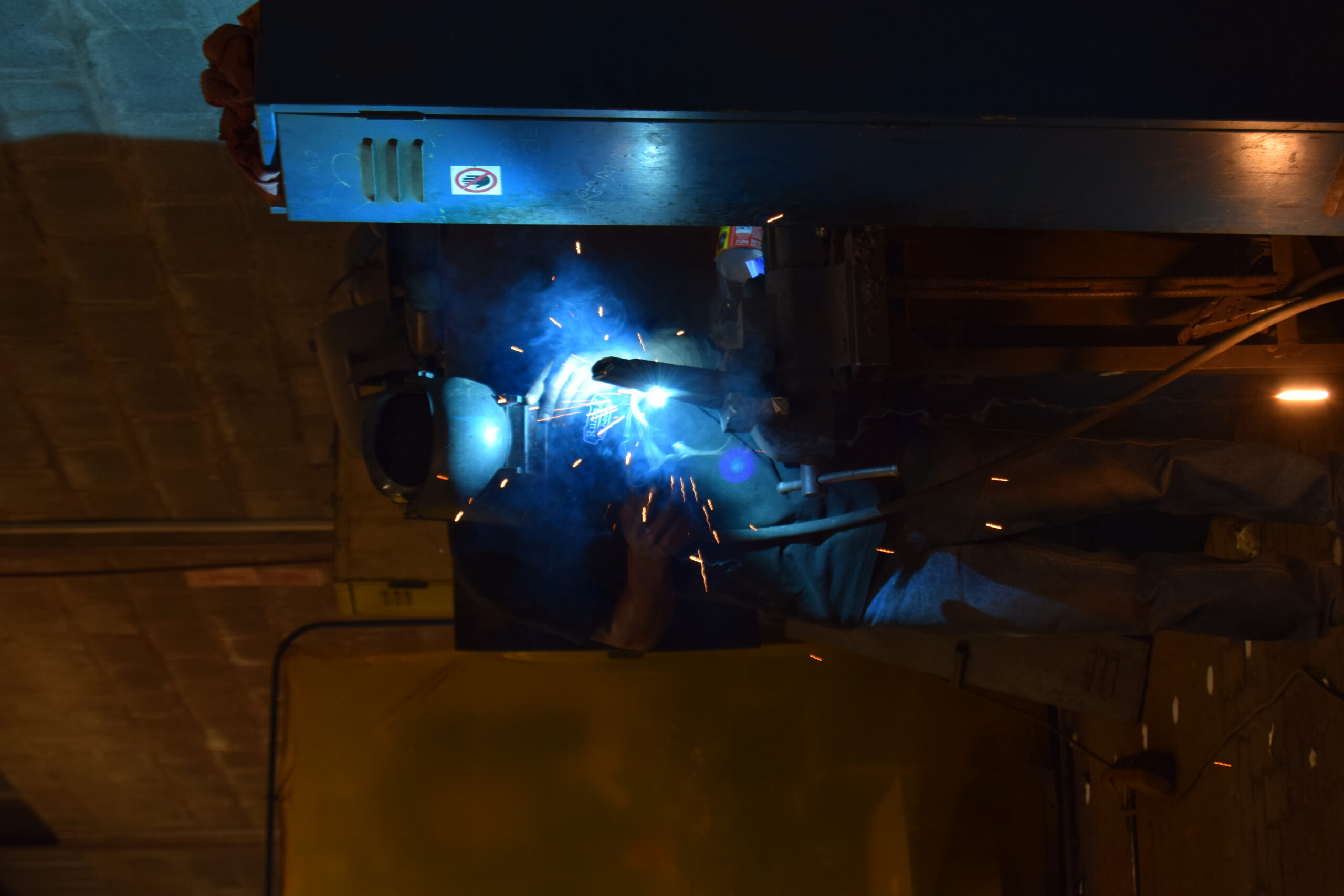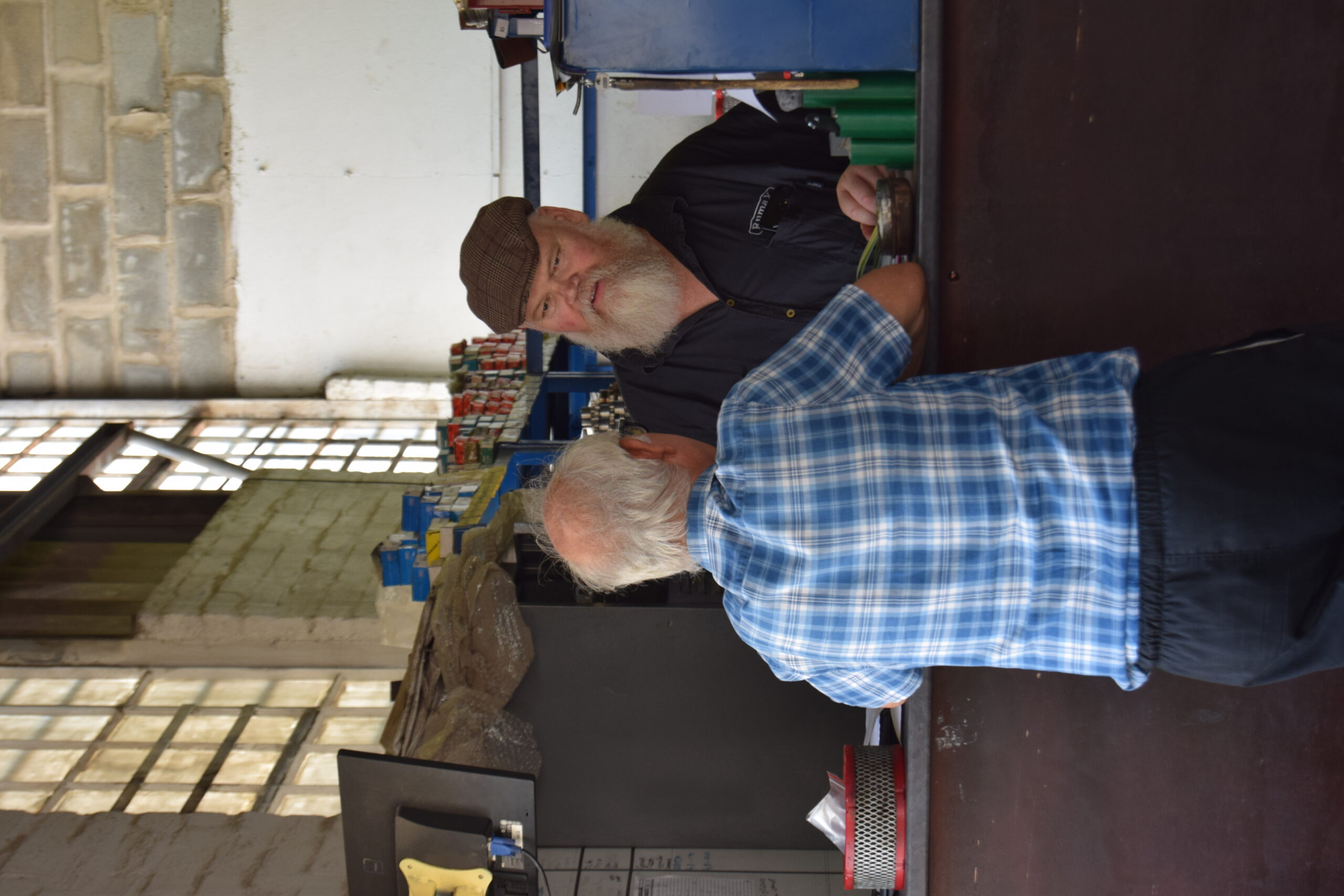Quality is the key word in every part of the manufacturing process at Rumax. From the sketch and design of the various machines they manufacture to where the final product is loaded to go to the customer, everything is handled with care.
“Every product starts in the office, on the computer,” says Jaco Pieters of Rumax. “We start by sketching it on SolidWorks, a design programme that allows us to design and view each component from all angles, also how it fits into other components, and then we send it to the factory.”
This blueprint is used to manufacture the components. Steel plates are cut and bent, and everything, from the plates to the smallest screw, is then joined together step by step and welded or bolted together until the whole machine is assembled.
The factory was one of the first in the country to use three-dimensional printers to produce certain components.
Rumax manufactures a wide variety of animal feed machinery, including hammer mills, pelletisers, spreaders, mixers and feed plants. Nowadays, feed plants are particularly popular among Rumax customers.
The factory is in Worcester, but products can be shipped to any place in the world.
“It is important to us to produce our own components,” Jaco says. “That is why we even have a foundry with heat treatments.”
He explains that it is better that way because it makes them independent from other manufacturers for parts they have to outsource. “Outsourcing makes you dependent on other people’s challenges with power outages and availability of materials. Keeping everything in-house gives us more control over our own process.”
Rumax addresses their own power challenges through solar panels and a generator.
“We actually try to be independent of other people so that we can deliver every product on time,” he says.
- The laser machine cuts the pattern – the basis of each product – out of the steel.
- Feed plants are in high demand these days. This is the structure for a conveyor belt.
Rumax takes us through the manufacturing process
“Everything starts with the computer. Currently, all existing products are already signed and ready: We just send the information to the machines.
“The laser will start by cutting out the necessary components from a steel plate. From there it goes to the bending machine or roller where the parts are formed. Next in line, the mechanical components will go to the lathe or any other workstation where the elements are made. This includes cutting gears with the CNC machine, after which they go through a heat treatment and are tested for hardness.
“After this, the machine is assembled and the plates are welded. If it is a complete machine, it is painted in our signature blue and yellow.”
Jaco says that even after the painting, the process is not finished yet. Then the final hydraulics and scales are added where necessary. The manufacturing process ends where the machine, whether a concentrate mixer, hammer mill or pelletiser, is first tested before it is ready to go to the farm.
- Further in the process, all the components that need to be welded are welded together.
- Even in counter service Rumax excels! Here Piet van der Schyff from the Parts Department promptly helps a customer with the parts he needs.
“Rumax focuses on building everything that the farmer uses in the feed industry. There is a whole range of hammer mills that cover all needs. We can help everyone, from the farmer who only grinds maize for his own use to large round bales for feed mixes or the entire plant where you can grind, mix and pellet roughage and alfalfa. We also make a full range of feeders and concentrate mixers that only mix fine materials. It usually goes together with a hammer mill. Then there are two types of pelletisers (one ton and half a ton) for farmers’ own use.
“Furthermore, we also manufacture manure spreaders and ridge cutters for vineyards, and other smaller equipment on demand,” he concludes.
For more information contact Jaco on Jaco@rumax.co.za or call (+27)82-335-3970 or (+27)23-342-6070

